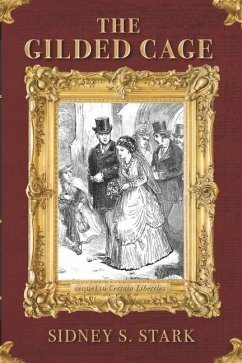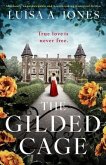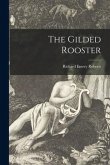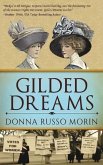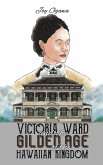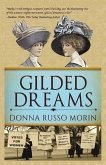The Gilded Cage, sequel to Certain Liberties, is immersed in historical currents of the mid 1800s. An intense family saga with the same memorable characters, while introducing a few new ones, The Gilded Cage explores tensions of the post-Civil War Reconstruction North and South. The unrest of a young couple's early-age marriage adds to the crushing pressures Emily and Corey must survive to excel as a parents, partners, and performers. Their struggle to live a "normal" life must endure betrayal, The Great Chicago Fire, and the Women's Asylum on Blackwell's Island. Survival, escape, and resilience unite in this portrait of a family and country emerging from War and the social turmoil that followed. "Stark follows the fortunes of a talented violinist and her family into the tumults of Reconstruction in this sequel to Certain Liberties (2019) . . . Stark's prose is elegant and ornate, evoking the Victorian novels that were popular during the time period . . . An unhurried and painterly novel of a musician finding her voice." - Kirkus ReviewsAuthor InterviewWhy do you write historical fiction? I love exploring stories from another era so I can learn more about my own. It's fascinating to see how lives and events are shaped by the social mores and political confines of the times. What is this trilogy concerned with for the most part? The impossible challenges for 19th Century women performers in music, and female violinists in particular; as well as dysfunctional families, betrayal and bravery, commitment and sacrifice, love and friendship, and the threat of technology as it races toward the industrial age. Why do you use some real people in with your fictitious characters? The people who lived at that time add a grounding to put the reader squarely in the mid-19th century to the beginning of the 20th. My readers have said they love learning more about history while enjoying the narrative and they look to my historical fiction to provide that. Why did you choose to write a trilogy starting in the mid-1800's and spanning three continents? From the Civil War to the ongoing European conflicts, and the striking advances of the Victorian era, the Trilogy spans an era arguably as dynamic as our current one. Covering that full timespan helps us to see our own in better perspective and is the best way to follow the full lives of the protagonists. How did you choose your protagonists? I didn't They chose me. It is often the way with authors who write character-driven fiction that they start to see and hear certain characters in their imagination without knowing why. My curiosity drew me to follow Corey de Koningh and Emily Alden around in their mansion on Upper Fifth Avenue in New York to discover what made them who they seemed to be. For whom do you write? Almost everybody, but certainly those who take an interest in learning more about history in a thoroughly exciting and enjoyable way. The books are meticulously researched and that makes them appeal even more to those who want to learn something new. Why does the research for your books make them appeal to so many disparate readers? Their factual foundation and sensitive handling of concerns paralleling those of our day affecting immigration, class discrimination, and gender bias, to name but a few, makes them appealing to a broad audience. And the knowledge that there was a time not long ago when playing the violin was considered to be appropriate only for men was a great place to begin the learning.

